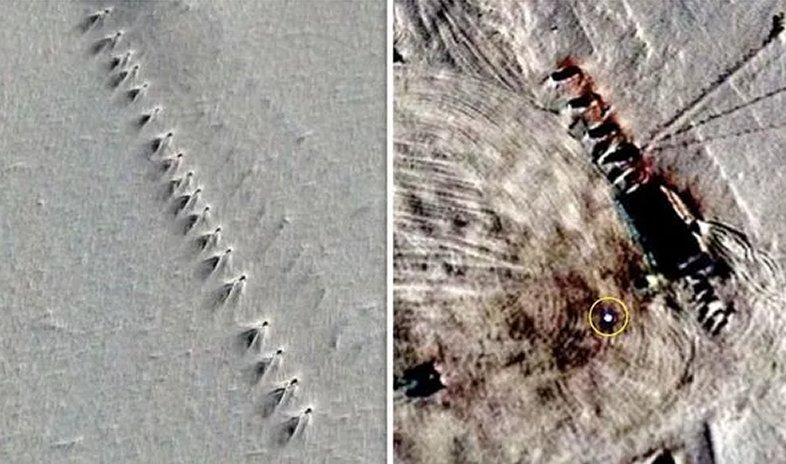


“Could this be something that was left behind by the ancient civilizations of Antarctica?” they added. “I would have to concur that whatever we’re looking at resembles some sort of megastructure.” “It appears to be a massive, ancient structure of some kind of face that is being revealed for the first time on Google Earth,” they said in a video. They noted that it remained undiscovered for a long time because it was buried underneath the snow. This site aims to familiarize people with Antarctica, to explore the richness of its features, to learn about why Antarctica matters to us all, and to explain and demonstrate how scientists use satellite imagery to study the continent.ĭownload LIMA data, hosted through the USGS, here.According to the YouTube channel thirdphaseofmoon, the image of the alien face was first discovered by an Italian researcher named Matteo Ianneo, who posted the Google Earth coordinates of the strange sighting on his blog.īrett and Blake cousins, the operators of thirdphaseofmoon, speculated that the alien face might actually be a large structure that was built by an ancient race of aliens that visited Antarctica. LIMA and this educational web site are projects of the International Polar Year. By achieving this goal to an extraordinarily high degree, images could be laid down without apparent boundaries between adjacent scenes and the scientific community was provided a data set of superb quality. Great care was taken to make all image adjustments so that the resulting pixel values represent actual surface reflectance, a property of the surface, independent of the solar illumination and of the state of the atmosphere. Details of the image processing used to create LIMA are described in the scientific publication “The Landsat Image Mosaic of Antarctica” available here (pdf, 993 KB). By employing the panchromatic band for additional spatial clarity, each image element (pixel) represents an area only 15 meters x 15 meters, about the size of half a basketball court.

This natural-color combination of bands was used to create LIMA only after additional adjustments to the data were made to recover regions that were so bright they saturated the Landsat-7 sensor and to account for different elevations of the sun in each image. Three of the spectral bands correspond to red, blue and green regions of the visual spectrum allowing their combination to produce a true-color image. A single Landsat image records the reflected brightness of a 185km x 185 km area of the earth’s surface in six spectral bands (30-meter spatial resolution), two thermal bands (60-meter resolution) and a panchromatic band (15-meter resolution). LIMA was created from nearly 1100 individual Landsat-7 images of Antarctica, most collected between 19. The Landsat Image Mosaic of Antarctica ( LIMA) is the first-ever true-color high-resolution satellite view of the Antarctic continent, enabling you to see Antarctica as it would really appear if you were hovering above it.


 0 kommentar(er)
0 kommentar(er)
